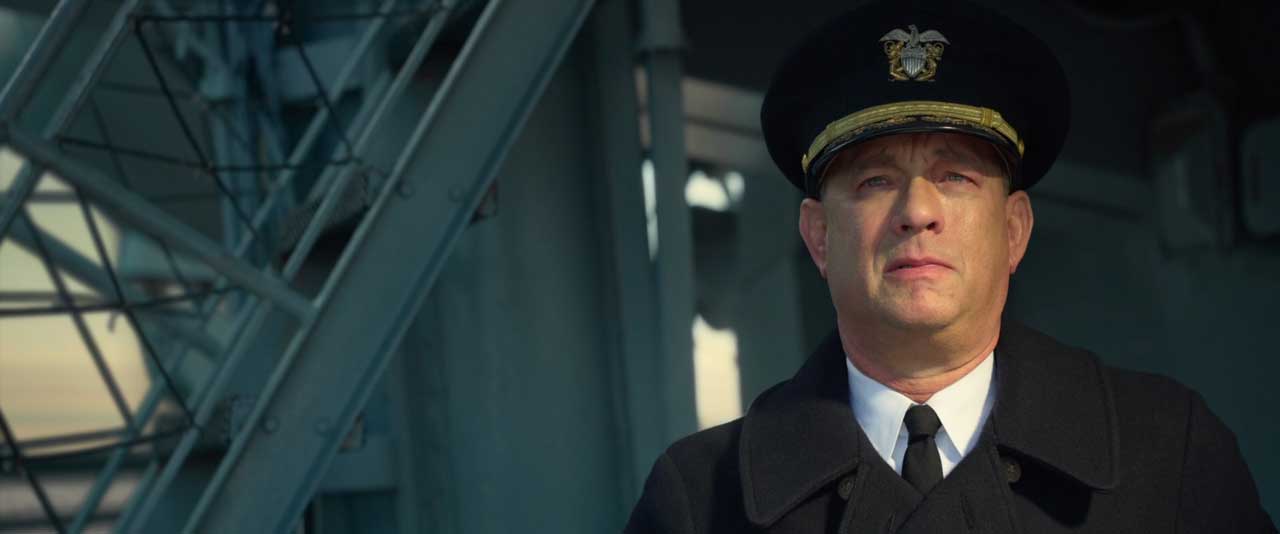
Greyhound starring Tom Hanks just premiered exclusively on Apple TV+. It’s interesting to see the opening credits where Apple calls the feature an “Apple Origina Film” when really the company just bought the exclusive home streaming rights in a 15-year, $70M deal. The movie was originally supposed to open to theaters this summer, but given the climate of the coronavirus pandemic Sony Pictures opted to auction it off to the highest bidder.
Oh, how it would have been great to see Greyhound on the big screen. The wide ocean shots just seem to be calling for a 50-foot image. The cinematography by Shelly Johnson (Hidalgo, Captain America: The First Avenger) plays with scale in a way that should be experienced as big as possible. Maybe, if theaters open again, a chain like IMAX might consider playing the film for even a short run.
But all we’ve got right now is our big-screen TVs, and at least the home video presentation of Greyhound is capable of displaying up to 4k resolution enhanced with both Dolby Vision HDR and Dolby Atmos audio. The “Dolby Duo” is about the closest you can get to cinematic quality in a home theater. But more on the video and audio later.
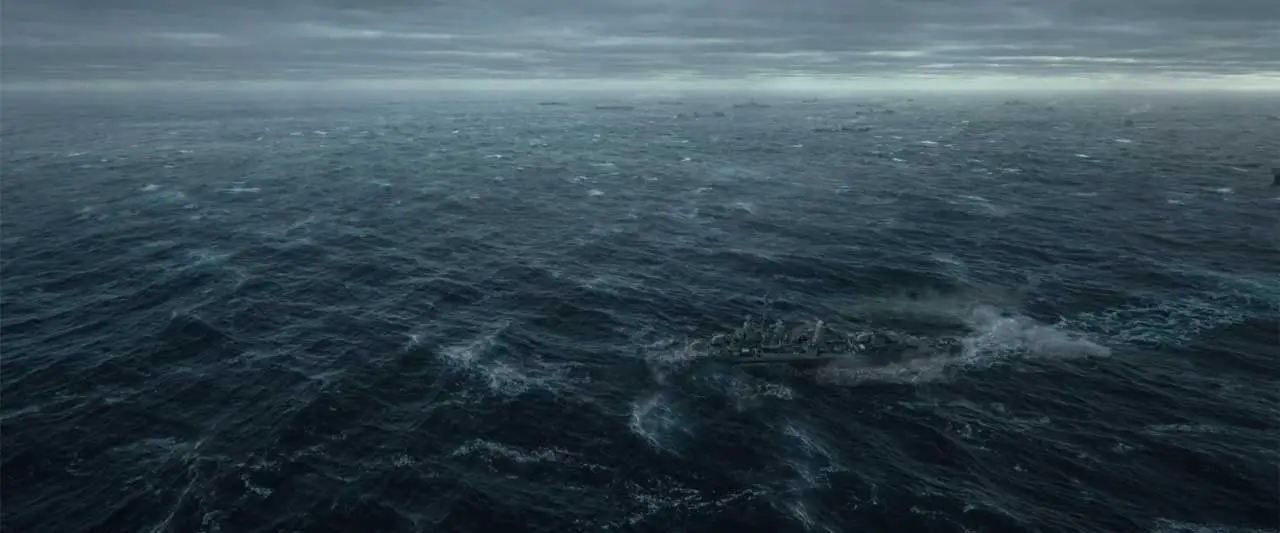
The Movie
Tom Hanks wrote the screenplay for Greyhound based on the famous novel “The Good Shepherd” (1955) by C.S Forester. The 2x Oscar-winning actor plays the commander of a US Navy destroyer ship that is tasked with escorting an Allied convoy across the North Atlantic. It’s also the first time Hanks’ character Ernest Krause has attempted to cross the Atlantic in wartime, where German U-boats (often traveling in wolfpacks) are threatening safe passage of the ships.
The film opens with the allied convoy escorted by Krause’s G-class destroyer and several other warships. But without any air support, the escorts are vulnerable to the U-boats. The lethality of the U-boat is made abundantly clear throughout the film. The submarine can submerge and attack underwater with torpedos but also emerge and cause heavy damage with their top guns. We don’t see any Allied submersibles in this film, which makes it even more critical for the escorts to deal with the U-boats.
The opening shot is just a teaser though, as the film quickly jumps to the personal life of Captain Krause who essentially gets turned down when he asks Evelyn (Elisabeth Shue) to marry him. After that buzzkill, which hardly seemed necessary for the plot of the film, the action starts up again and doesn’t let up until a somewhat anticlimactic ending.
This is an anxiety-filled movie that attempts to put you in the shoes of Captain Krause who seems both disheartened (about his failed marriage proposal) and nervously excited (about his first wartime mission). He’s also eager to prove himself as his naval experience outranks all others in the convoy, even though they’ve got war experience.
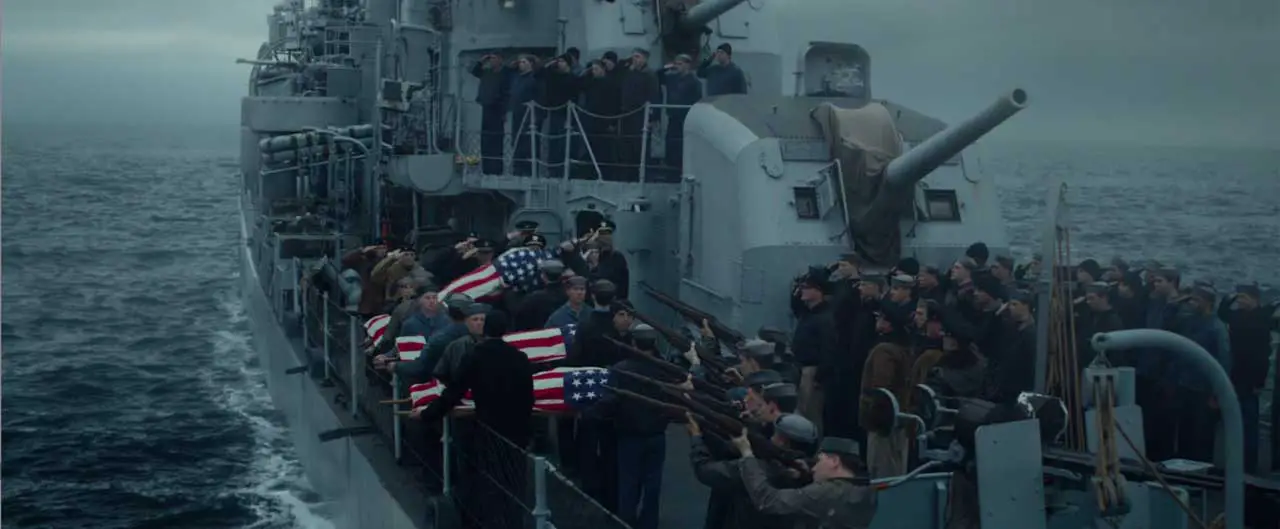
Video
The 4k presentation of Greyhound is pretty much flawless. It was hard to find any banding in the sky gradations or shadow areas. The film is also very sharp, and although many scenes were shot in a lower F-Stop with shallow depth of field, the subject is always in focus. The wider scenes with higher F-Stops are also very sharp, especially in 4k where the entire scene is loaded with details.
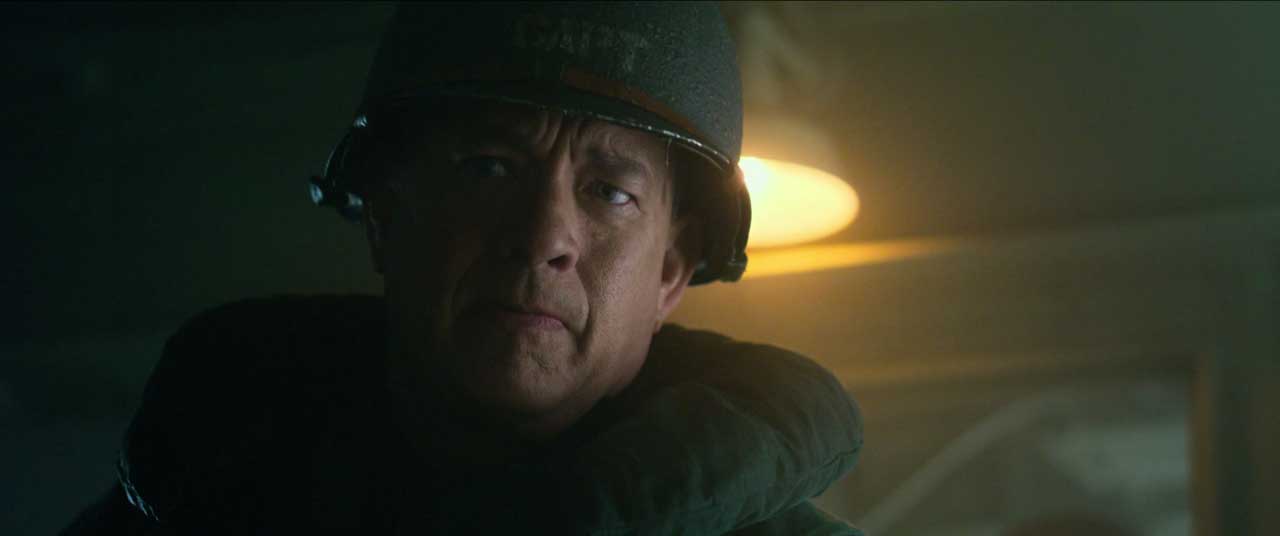
The film has a slight blueish cast throughout the ocean scenes, but when it cuts to land the coloring turns warmer, with highlights of soft red and yellow contrasting the blue tones. The warm tones return at the end of the film, when Krause is finally seen in natural sunlight as he overlooks cheers from Allied ships.
HDR adds more color to the film by expanding the bit-depth using Dolby Vision (but also limited by what your TV can deliver). In bright areas and dark areas you should see more elements than you would on a non-HDR TV or laptop. However, your set needs to be a 4k HDR TV (which should convert the Dolby Vision spec from the digital stream to HDR10 if necessary) and HDR needs to be enabled in the TV’s settings to see the improvements.
There is one wide panning shot to look for, which may be the most beautiful in the film. The camera follows Allied flares shot up into the sky and then moves above the clouds where the Northern Lights are visible. It’s a masterpiece of cinematography that’s reminiscent of J. M. W. Turner’s marine paintings.
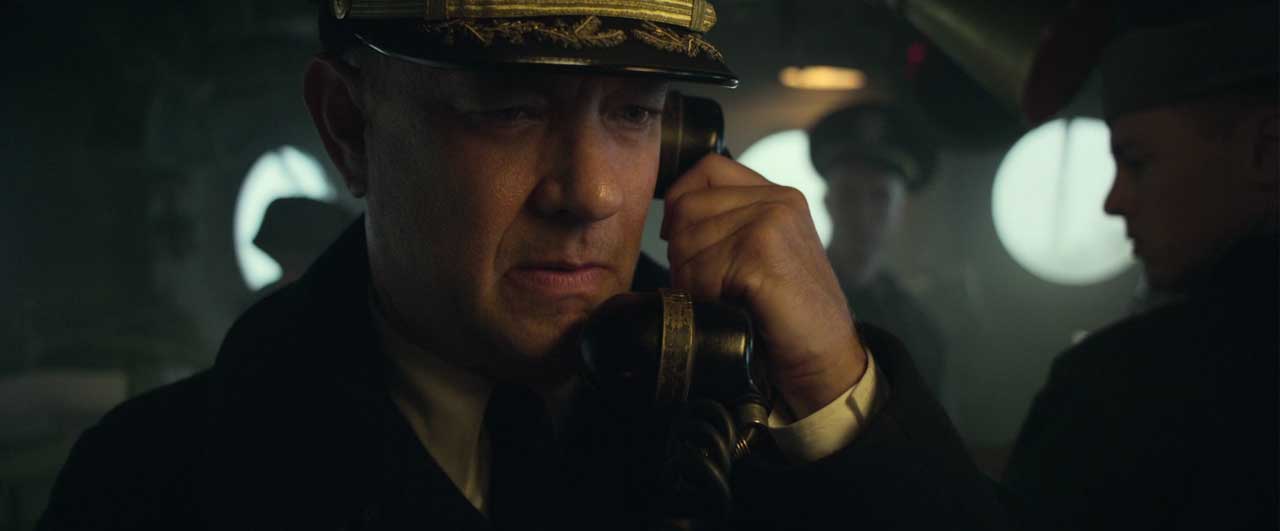
Audio
If a subwoofer is part of your audio system get ready to be rocked. The sounds of ocean waves hitting the Navy warship are about as immersive as you can get at home. There is also a ton of dynamic range exhibited. Ambient noises, both inside the ships and underwater, bounce around the dialogue audio that is super crisp. Listening with headphones (which can be hooked up via Bluetooth on Apple TV) flattens the audio but is still a good immersive experience.
The soundtrack does get a little annoying though every time they show a German U-boat. The images are backed by the sounds of eerie whale-like whines that leave no doubt in your mind who the bad guys are.
If you don’t have a Dolby Atmos sound system the audio should revert to the highest quality surround sound available. For example, if your sound system is 5.1 or 2.1 channels the 7.1 mix will get downsampled. A subwoofer, however, makes all the difference in this soundtrack.
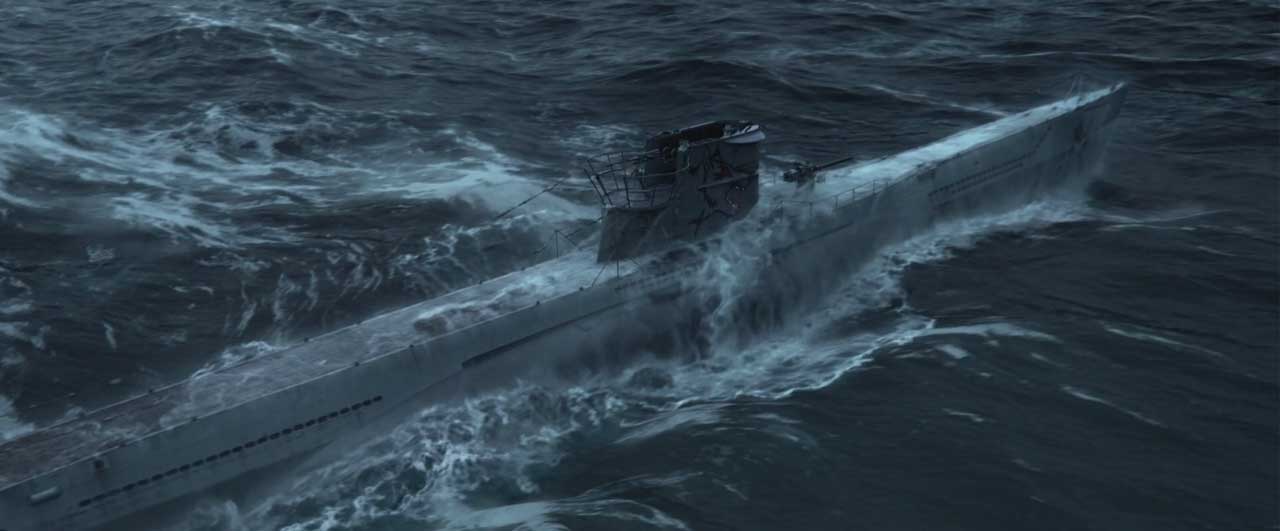
Summary
There really isn’t much of a story in Greyhound – no plot twists or major conflicts to speak of. Instead, the script is steeped in marine terminology and ocean battle tactics that, for the layperson, make this film more intriguing. Greyhound is nowhere near as suspenseful as classics like Das Boot and The Hunt for Red October, but, it’s incredibly entertaining if you’re looking to get away from the real world for a bit and onto the open seas. It’s also a really good looking war film. For anyone who loves war movies, especially those at sea, Greyhound is 91 minutes of immersive action you won’t soon forget.
Scores
Movie
3/4
Video
4/5
Audio
4/5
Bonus Material
3/5
